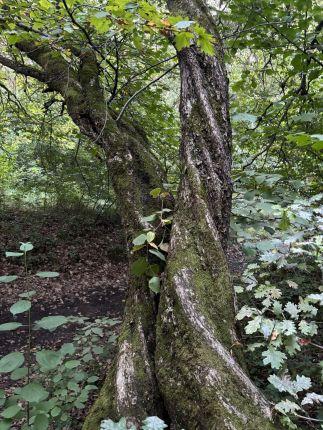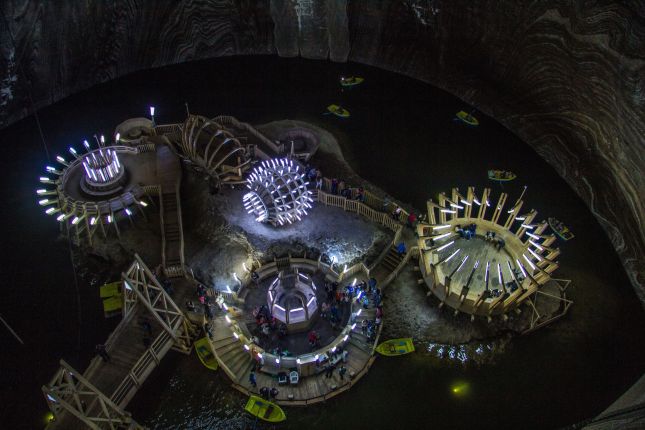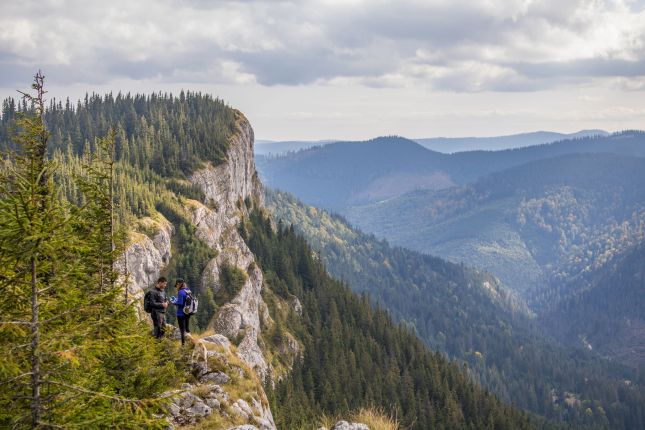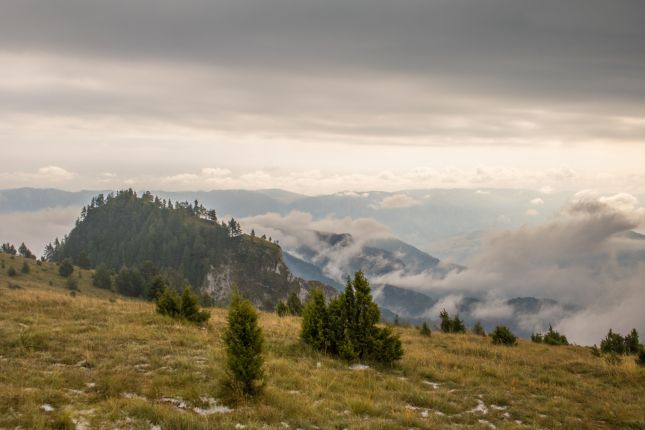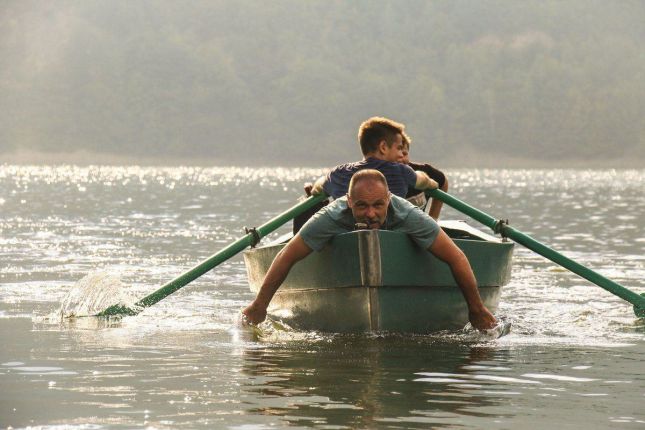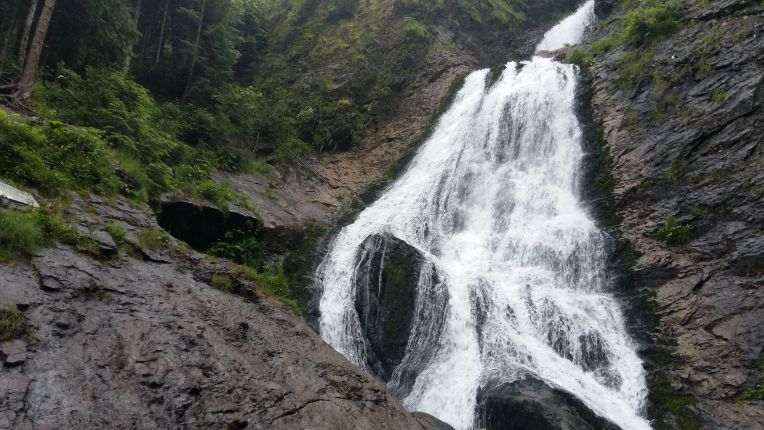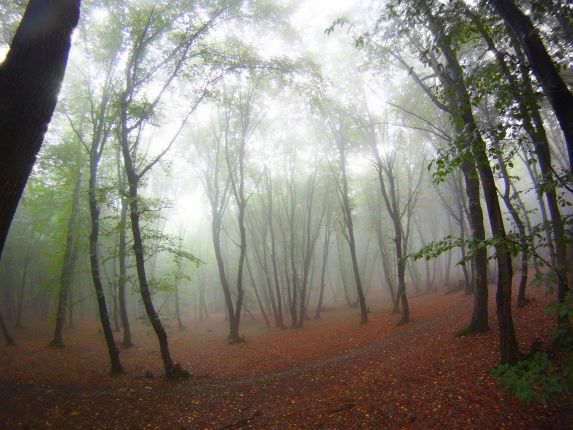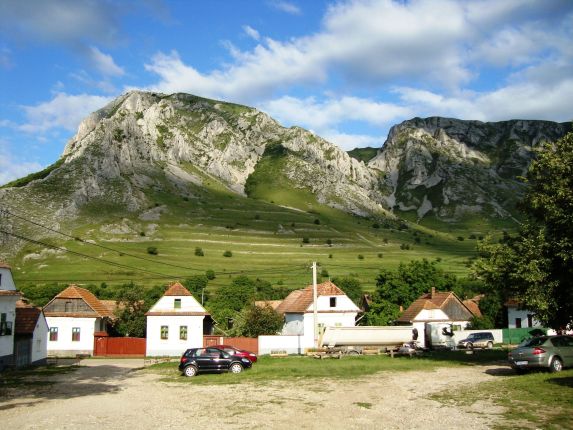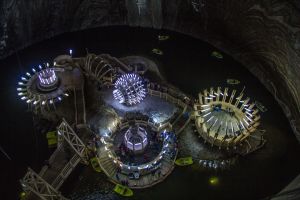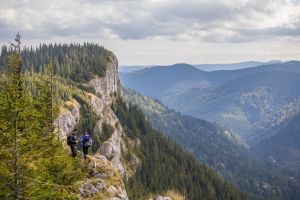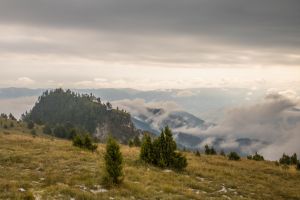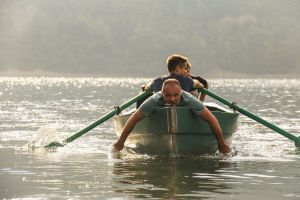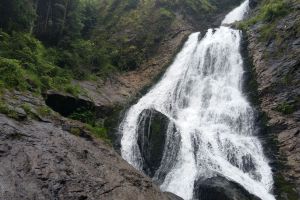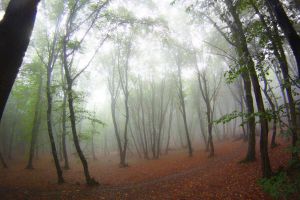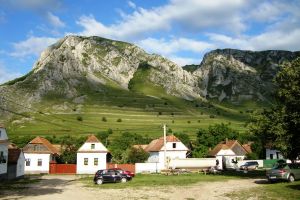
Tours & Day Trips in Cluj-Napoca
Cluj Napoca is Romania's second largest city, the unofficial capital of Transylvania and a great place for a city break thanks to its well connected airport with flights form all over Europe. The city of Cluj is known as 'The Biggest Festival in Europe' because there are so many events going thanks to its friendly and bohemian locals.
Discover the city's tourist attractions on a guided tour of Union Square, St. Michael Church, Cetatuia Hill and the Botanical Garden. Check our complete guide on what to do in Cluj-Napoca to find out more about things to do in the city, places to go out, day trips and practical info for your trip.
Cluj Napoca is also a great base to visit popular tourist attractions in Transylvania and the famous regions of Maramures or Bukovina known for their UNESCO World Heritage site and traditional way of life.
On a full day tour you can visit Turda Salt Mine, Alba Iulia Citadel, Corvin Castle, the mysterious Hoia Baciu forest or go hiking in Apuseni Mountains. If you want to visit Bran Castle aka Dracula's Castle we recommend a 2-day trip.
See below our Cluj-Napoca tours and day trips with our friendly and specialist tour guides. Contact us if you're looking for a custom tour!
Tour type:
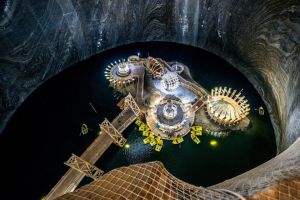
Cluj Top Attractions: Turda Salt Mine, Alba Iulia Citadel & Rimetea Village
Start from: Cluj-Napoca (pick-up)
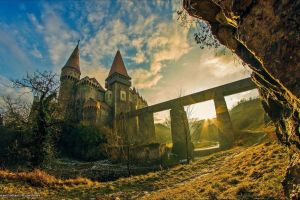
History Day Trip: Corvin Castle & Alba Iulia Citadel
Start from: Cluj-Napoca
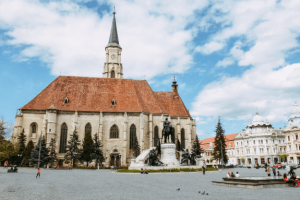
Short Walk & Talk about Cluj-Napoca with a Local
Start from: Cluj-Napoca
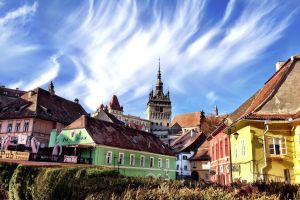
Tour of Transylvania's Countryside: Sighisoara Citadel & Fortified Villages
Start from: Cluj-Napoca
Reviews about Tours & Day Trips in Cluj-Napoca

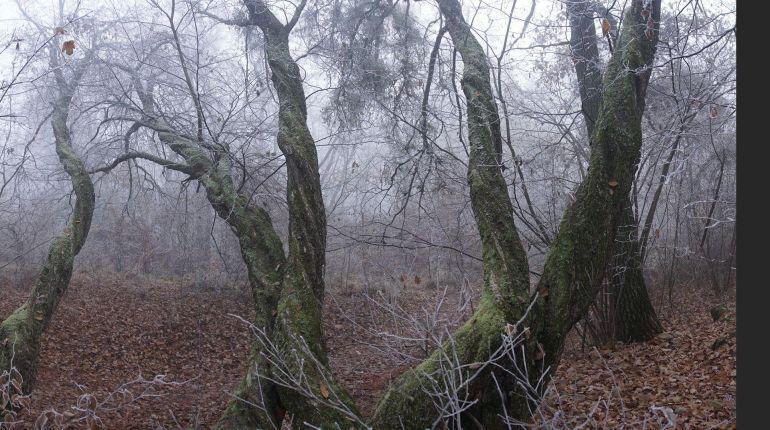
Alex is a great guy! He is very organised, flexible and well prepared! We walked around the Hoia Baciu forest and he showed me many materials about history of paranormal activities and legends in Romania. Really a great tour!!!


SUCH a good tour. I went with Iancu, and he was the best. He really went above and beyond to make sure I had an experience that was tailored to exactly what I wanted. It was the perfect blend of tons of interesting information with just good, quality chats. Thanks for everything, Iancu!!

Iancu made my day! :) The tour is wonderful itself, but with Iancu is another level! He is such a friendly, knowledgeable and funny guide. He gave me a lot of interesting information regarding Romania, we visited some amazing places that I wouldn't know and I wouldn't do by myself. He is super flexible and he stopped every time I wanted to take pictures (he loves photography as well and for me it was big plus!). He really did everything in his power to make me happy and to enjoy the day. The top was the picnic over Dumesti admiring an amazing sunset! He also gave me lots of suggestions for my next days in Romania. Merci Iancu :)

Unfortunately this is the second time that I have had to cancel because if unforeseen circumstances. Alex has been very helpful when I have had questions, and Romanian Friend promptly refunded me. I look forward to meeting Alex hopefully next May. I have heard nothing but great reviews about Alex and I really want to see this forest!!
Best Tours and Top Things to do in Cluj-Napoca
Planning to visit Cluj-Napoca? Great idea – here’s some inspiration to help you plan your trip and choose the best Cluj-Napoca tours!
Situated in the heart of the historical region of Transylvania, Cluj County (known as "județ" in Romanian) is the second most important center for Romania's economic, cultural, and social life. It also serves as a great base for a full day tour of numerous landmarks in Transylvania. Cluj-Napoca (unofficially considered the capital of Transylvania among locals) is the main city of the county and the second largest in Romania.
The name Cluj comes from the word "clus" in Latin which means "closed" and refers to the fact that the city is situated between hills and the Apuseni Mountains of Western Carpathians. Many tourists and adventure enthusiasts from around the world choose to join Cluj-Napoca for its vibrant cultural scene and proximity to stunning natural attractions.
If you’re going to visit Cluj-Napoca then check our suggestions below for tourist attractions and areas you can visit on guided tours – and let us know if you need any help in deciding where to go, or planning your trip!
- Cluj-Napoca - the unofficial capital of Transylvania!
You need at least one full day, best is two, to visit the city of Cluj-Napoca. Besides a leisurely walk in the city, there are many attractions you should consider, most of them outdoor and not overcrowded, making this a very safe destination after the Covid pandemic. Cluj-Napoca is the perfect place for history buffs and art lovers, with its rich cultural heritage and an abundance of museums and monuments to explore.
Dive into the history of the fascinating city of Cluj and Transylvania by discovering the stories behind the city’s impressive neo-classical and Secession buildings, historical monuments, and public squares. Go on a guided tour of Cluj to learn how revolutions, anti-communist protests, and even the Great Union of 1918 were planned in the townhouses here.
Find out in what way was history changed in Union Square, discover the historical significance of the Museum Square in the medieval part of the city, and take in the cultural mélange of Romanian, Hungarian, and Austrian culture, all coming together in heritage in the Avram Iancu Square. Museum Square is located between the biggest and most exciting museums and it’s also the place where many local events take place. Although Cluj-Napoca’s Old Town area is large, all three squares are within walking distance.
If you are a fan of architecture, Cluj will not disappoint. In churches and cathedrals alone, it combines the Gothic style of St. Michael’s Church, a Romano Catholic edifice dominating Union Square, with the local Orthodox tradition of the Orthodox Cathedral in Avram Iancu Square (Piata Avram Iancu in Romanian), near the Museum of the Cluj Mitropoly, and the Franciscan Church and Monastery. If architecture is what makes you fall in love with a certain place, then the Gothic style of St. Michael will captivate you at first sight, and that’s just one of many.
And when you are done with your trip through Christianity and its architectural representations, you end up in the museum district of the city centre, right between the Transylvanian Ethnographic Museum and the Museum of Transylvanian National History. If you plan to see them on the same day, start early and expect to get side-tracked by the many other side attractions and alleys in the Old Town. Casa Matia, a former medieval inn and the birthplace of Matia Corvin, son of Iancu de Hunedoara, is in the vicinity, as well as the Cluj-Napoca Art Museum.
Cluj-Napoca is famous for its culinary experiences boasting some of the best restaurants in Romania. When you are in the city center, don’t miss out on BARACCA gourmet restaurant seen by international food bloggers and locals alike as one of the best in the country. Come for the food, stay for the fancy establishment, welcoming staff, and relaxing atmosphere. Via Restaurant is another great option in the city centre, with a diverse menu that will make you sorry there are only so many meals to be had in a day.
Cluj’s Old Town area is like the Bermuda Triangle for foodies and coffee lovers, making it the perfect starting point for a fun Cluj walking tour. No matter how many places you try, you will always feel there is that one cool, fancy, or interesting place you saw and did not get to go. Don’t worry, this is how locals feel too! That’s why we recommend tourists to extend their stay and take it slow. The true Transylvanian spirit is to take it easy, relax, no rush, enjoy life, have a good meal, and spend time with friends and family.
But if your time is limited, maximize it by going on a food tour in Cluj-Napoca to visit a farmer’s market and taste regional dishes, desserts, and specialty coffee with a local guide who knows his way around a spoon and fork.
Once you are done with your city tour, visiting the Tower of Firemen, the Tower of Skydivers, or the Tailors’ Tower, stepping into every boutique shop and eating to your heart’s desire in the Old Town area, it is time to break for a while from city life, to disconnect from history and tradition and to enjoy a relaxing stroll.
Nature lovers can find the perfect escape in the heart of a modern, busy city at the Cluj Botanical Garden one of the most beautiful in the country, which also includes a Japanese garden renowned for its Asian specimens. The rose pavilion in the Botanical Garden is also impressive and the best time to visit is May - June.
The Central Park in Cluj known as Simion Barnutiu Park, with its mesmerizing water fountain and its stunning Casino building, is another great place to blend in with local life. Here you can even rent paddle boats for a nice day on the lake. And if you plan on spending a nice evening out, start out with the CHIOS Social Lounge situated on the park’s lake. The view is breathtaking, inside and out and the local atmosphere is at its best!
Some visitors like to end a day walking around town with a trip to Cetatuia Hill for a sunset walk and maybe a bite to eat at some of the food vans on top. A cool beer or a delicious hot chocolate can well complement the view of the city whose heart you have been exploring all day long.
The best thing about Cluj-Napoca is its unique blend of historical charm and modern lifestyle, making it a captivating destination for any type of travelers.
Now let's see what popular tourist attractions are nearby that you can visit on a full day trip from Cluj.
Visit Turda Salt Mine on a tour from Cluj Napoca
Today’s journey will take us on the most popular day trip from Cluj to Turda Salt Mine (Salina Turda in Romanian), a must-see attraction in Romania and one of the most interesting places you can fully experience, especially with a great guide. The 2000-year-old mine is the most popular tourist attraction in Cluj County with almost 700.000 visitors each year who come to explore its impressive underground treasures since it was first recognized as a tourist attraction in 1992.
The 2009 – 2010 modernization of the mine with European Funds added lighting decorations that make the scenery spectacular and the huge caverns and tunnels even more interesting. Accessibility through the tunnels and to the main attraction points was increased for all age ranges and created the leisure centre people enjoy so much when visiting.
120 meters deep, the fascinating Salt Mine of Turda is not only a spectacular underground formation with huge grottas, but also a historical monument, an amusement park, and a relaxing oasis surrounded by salty air, so beneficial for the lungs and overall health. In this underground theme park, you can try bowling, mini golf, a ride on the Ferris Wheel, the pool, and the tennis tables, and you can even book a boat ride on the salty waters of Mine Lake Terezia for an even more immersive experience in the heart of Transylvania.
Visiting fees for adults are 50 lei Monday to Friday, 60 lei Saturday and Sunday, and 30 lei for seniors, children, pupils, and students throughout the week. All fees for leisure activities can be consulted online, along with parking and other optional fees, and entrance tickets can be purchased online in advance with a 24-hour cancelation option available.
If you’re worried about being in closed, confined spaces in the post-Covid era, rest assured that safety measures are in place. All public facilities are sanitized frequently. Visitors are advised to use hand sanitizer, to avoid crowds, to use the stairs (for those physically fit) not only the elevators, and to come in early to have enough time to enjoy everything underground. Even people with minor claustrophobia feel safe here!
The Salt Mine is part of what Turda has to offer tourists, along with a recommended visit to the salty baths, the ruins of Potaissa Fortress belonging to the 5th Macedonian Legion, the Turda medieval fortress, the tomb of the famous Romanian prince Mihai Viteazul, the Calvin Reformed Church, the Turda Museum or the local zoo. There is also a SPA & Wellness Center, which would complement the healthy activities you have undergone underground, and the Potaissa Hotel Restaurant will be a treat and a delight for all your senses.
Turda Gorges: ideal for a quick hike or bike tour
A 30-minute car ride or an even longer yet healthier bike tour from Cluj will take you to Turda Gorge (Cheile Turzii). This is a day trip to a natural attraction you don’t want to miss out on if you’re a fan of the outdoors. The Turda Gorges were formed through the erosion of Jurassic limestones thousands of years ago. The steep canyon is 1270 meters long and about 200 meters high and is crossed by Hashed Creek. Thanks to its wild beauty and natural diversity, Turda Gorge was included by UNESCO on its list of the most important natural attractions and reservations. There are more than 60 caves of about 20 m - the longest one being 120 m.
The area has been declared a protected natural area because there are over 1,000 plant species (including wild garlic) and around 67 species of animals, including deer, weasel, fox, wild boar, rabbit, marten, living inside Turda Gorge.
Besides being full of natural wonders, there are options for light trekking, medium hiking, and real mountaineering and rock climbing adventures. Just make sure to wear the right shoes on your hiking day trip and hire a hiking guide who can take you on an unforgettable adventure outdoors. Unfortunately, there’s no other way to reach Turda Gorge than by car.
With steep walls and a rocky canyon, this is a great place to go on a hiking trip with various trails available to choose from. The hiking route is suitable for people with an average level of experience or physical condition, but with the right guide, it is accessible to beginners as well. A guide can also show you special points where the gorges close in on you and you truly feel isolated in a natural oasis, or great vista points!
If you are looking for some adventure, opt for the Via Ferrata hiking tour in Turda Gorge, one of the most popular in Romania. Via Ferrata means rock climbing and mountaineering using steel cables attached to the rock. This is an option for experienced climbers or people who want to learn how to do this and have a medium/good physical condition. Our friendly hiking guide will provide the equipment and can teach you how to do this – so don’t hesitate to book our hiking tour if you’re interested!
Apuseni Mountains and National Park: the best destination for hiking tours from Cluj-Napoca
The National Park of Apuseni Mountains has been declared a national protected area due to its picturesque rural landscapes, varied geological structures, and unique flora and fauna. This is where some endangered species such as the brown bear and the otter can still be seen here in their natural habitat. Eco-tourists and mountaineering enthusiasts can explore over 300 caves. The most popular guided tours will take you to Scărișoara Ice Cave where you can see the second largest underground ice block from the glacier-era in the world or to Vârtop cave where the oldest traces of the Neanderthal man were discovered. How exciting is that?
Other hiking day trip options will take you to Scărița Belioara, a rock formation situated at an altitude of 1300 meters which offers a unique view over the surrounding Apuseni Mountains. This trip is suitable for people with a medium to high fitness level as there will be hiking uphill – but the views are breathtaking and totally worth it!
Spread over almost three counties (Bihor, Cluj, and Alba), the park offers numerous opportunities for tourists to discover local diverse communities and experience what is representative for the Romanian traditional lifestyle. On your way up to the natural wonders of the Western Carpathians, you will pass through remote villages and take a sneak peek of the local life; you can see with your own eyes how people manage to live off the land, cut off from civilization, being in touch with nature, self-sustained, and ever so hospitable and generous.
One region of interest is known as Moților Land where specific customs and crafts are preserved by local craftsmen. Playing the tulnic, a long, elongated blowing instrument with a unique sound is one of them – once you hear its echoes going over the hills, you’ll never forget it! Having local connections is essential if you want to see this, so you’ll need to hire a guide for a multi-day tour from Cluj for this kind of experience.
- Bride’s Veil Waterfall
Another popular natural attraction you can see on a day trip from Cluj through the Apuseni Mountains is a visit to Bride’s Veil Waterfall. It's located near Răchitele Village, at the base of the Vlădeasa Mountains. This is just one of the many destinations in the heart of these incredible mountains, accessible to the people doing the Pietrele Albe (White Stones) mountain circuit. This is one of our most popular hiking day trips from Cluj-Napoca.
With an impressive fall of over 30 meters and a wide rock display for the tumbling water, the name “Bride’s Veil” comes from the similarity between the waterfall pattern and a bridal veil.
In wintertime, the water stream freezes and creates the perfect environment for climbing. There is even a legend about how a bride fell from the cliff and her veil was left hanging from the rocks. Upon seeing her perish, her loved ones invited to the wedding started to weep and their tears formed the waterfall.
- Belis – Fantanele area in Apuseni Mountains
Nature was not the only beauty creator in the area. To find proof of that you must only take a day trip from Cluj some 100 km from the city to the Belis Fantanele resort. The artificial lake in the area is located close to the village of Belis, and it was created when a dam was built there between 1970 and 1974.
The lake flooded the villages in the area and forced locals to relocate the entire village, including the cemetery, on the nearby hill. In the middle of the lake the former church still exists and sometimes can be seen when the water drops as proof of the village that was once there.
Now, the Belis Fantanele area is a very popular summer and winter destination with locals, as a wild place of nature and relaxation. Besides breath-taking views, you can also enjoy summer tourist activities such as fishing or swimming, or simple ones in winter like riding the slope with a sledge.
- Szekler's Stone and Rimetea Village
There’s another popular day trip from Cluj to a place so beautiful that the sun has to rise twice just to see it! Are you intrigued yet?
The village of Rimetea is said to be one of the most beautiful in Romania, with bright white houses adorned with dark green shutters, a testament of the Hungarian and Szekely heritage in the area, well-kept gardens, and friendly locals! This is the first Romanian village to have received the Europa Nostra Award for architectural patrimony preservation.
First mentioned in written documents in the 13th century, Rimetea developed around its mining and blacksmith activities and strived up until the 19th century, when most houses were built in this specific style as a sign of the locals’ wealth and pride.
But more than that there is the Szekler's Stone (Piatra Secuiului in Romanian) which towers over the village and offers spectacular views of the entire area.
This is the reason they say the sun rises twice over Rimetea. Because of the towering peak, the first sun rays remain “stuck” behind it, only to reappear as the sun rises over the horizon. On a guided tour you can either see the medieval mining center of Rimetea and stop to taste the amazing local flavors or choose to go hiking all the way to the top of this impressive natural attraction!
Hoia Baciu haunted forrest
Definitely one of the weirdest, not-so-common, and un-touristy attractions in Romania, the Hoia Baciu forest near Cluj-Napoca is said to be haunted and a place of paranormal activity. Without a doubt, it’s one of the most popular tourist attractions and day trips from Cluj for tourists looking for a different, off-the-beaten-path experience.
Hoia Baciu forest became known in the “different” tourism scene after a UFO was presumably sighted hovering above it in the 1960s. After that, the forest started displaying strange, unnatural forms of vegetation, like the Round Glade (Poiana Rotundă), a perfectly circular glade where nothing but grass grows at an even level like it’s being constantly mowed! And in some parts of the forest strange, inexplicable data readings show up.
But in reality, there are lots of local stories and legends about strange things that happened in the forest which created its reputation among locals. One of them is about how a shepherd inexplicably went missing with his entire flock inside the forest. That’s why it’s called the haunted forest of Romania and locals from all over the country come visit!
If you want to hear about these stories and see the strange places and weird fauna inside the forest then our expert guide is the most knowledgeable in the matter. He has been doing guided tours in the Hoia Baciu forest for almost 8 years now and is truly passionate about making it known on a short trip from Cluj. And since the forest is not your typical tourist attraction there are no tourist information panels or trails, it’s just a forest! So visiting with a tour guide is necessary!
You don’t need to pack your ghostbuster overalls as our guide will provide you with a Geiger meter and other equipment for special measurements. This way you’ll see for yourself. The guided tour is available in daylight and at night-time for those looking for a unique experience.
Banffy Castle in Bontida
Banffy Castle is a popular destination for music and film lovers, as well as history buffs looking to explore ruins and historical attractions on a short trip outside of Cluj. The castle in the small village of Bontida was built in 1437 and suffered numerous changes and additions to its structure up until 1890. The castle is one of the many properties that belonged to the wealthy Banffy family, a noble Hungarian family from Transylvania.
The original architectural style was the Renaissance, but due to later changes, it also has Baroque and Romantic influences. After the last owner died in 1950, Banffy Castle was used by the communist regime as the headquarters for an agricultural cooperative in the area, which led to some serious degradation of the building. Recently, it underwent a series of restoration works thanks to it being included on a list of 100 most endangered sites in the world in 2000.
Since 2013, Banffy Castle has been the host location for the Electric Castle music festival. The festival gained popularity and prestige on the European festival scene having won several awards for the best medium European Festivals Awards. Part of its annual profit is donated to the fund for the monument restoration and the festival helps build awareness and appreciation for the ruins of Banffy Castle, which can be visited freely. Also, it hosts some of the outdoor screenings of the Transylvania Film Festival. Its vast open spaces were a blessing for people who longed for cultural events during the Covid pandemic.
Apart from the cultural and entertaining events organized here, the place is a great destination for a picnic or a relaxing stroll on a trip out of Cluj.
Tarnita Lake
When you feel the need to change the cobbled stones or cement under your feet with soft grass, and if you want to feast your eyes on some natural beauties as opposed to architectural wonders, book a day trip from Cluj to Tarnita Lake. It only takes an hour or so by car to get there.
Tarnita Lake is an artificial lake formed in 1974 after the construction of a dam 97 m high and 237 m long. Stretched over an area of 8 km and a depth of 70 m, the lake is attractive for locals passionate about sports and activities such as fishing, water skiing, jet skiing, swimming, or boat rides. You can go for a hike, challenging or more accessible, depending on your fitness level. Lucaci’s Rock at the Tarnita dam is a 3-hour hike away from the base and an option for people at a medium level of training. The hike to Dan’s Rock is only 2 hours but much more challenging.
Also, there are sports events and competitions that are organized in the area, as well as summer festivals and celebrations. Located some 30 km away from Cluj-Napoca, it’s perfect for a great day outdoors. On your way back to Cluj, stop at Gilau for a spectacular view of the sunset over another lake. A nice way to end a day spent in nature.
The Ardeal Delta
When it comes to Romania and its genuinely unique places, the Danube Delta should be at the forefront of everyone's mind. However, if you happen to be in Cluj, there's another fantastic destination that offers a bit of typical village life in a distinctive setting. The Ardeal Delta is situated near Cluj, in the picturesque village of Sic.
This area stands as one of the most beautiful nature reserves in Romania, featuring dense thickets and breathtaking scenery. The Sic village is home to the Dance Museum, where you can explore exhibitions of traditional clothing, furniture, musical instruments, and photography showcasing local celebrations.
Sic is surrounded by hills with a maximum height of approximately 500 meters, offering a great view of the village and its surrounding areas.
Corvin Castle
Another private day trip you can choose from Cluj-Napoca is a visit to Corvin Castle, which has been ranked among the top 10 most beautiful castles in the world. The moment you step onto the bridge leading to the castle's entrance, you'll feel like you're leaving behind the hustle and bustle of a normal city and stepping into a distant period – specifically, the 15th century when the castle was built.
Traditional region of Maramures and its UNESCO Wooden Churches
If you go North, for example, you will enter the historical region of Maramures, a place with numerous UNESCO sights, cultural attractions, and a glimpse into traditional Romanian village life unlike anywhere else in Romania. One interesting attraction is the Merry Cemetery of Sapanta, a place where people’s lives are celebrated on their tombstones in the most creative ways. Meet the locals and see their colourful traditional costumes. Attend a village dinner while wearing such a costume and see how well you can blend into the background. Book a guided trip from Cluj to Maramures and spend a couple of days there for the full experience.
Traditional region of Bucovina and its UNESCO Painted Churches
Bukovina is further up North and the place where you will see some of the most beautiful monasteries in Romania. Some of them are included in the World UNESCO patrimony, like the Voronet monastery, painted 400 years ago with a unique shade of blue which stood the test of time so well that it baffled experts. And if admiring old monasteries makes you think that time stays still in this part of the world, then a trip with the Mocanita (a very-very slow train that still runs on coal) will guarantee that you have fallen in a time pocket only the lucky ones who visit this place know about. Like Maramures, the best way to experience the beauty of this region – and also due to logistics – is on a multi-day guided tour.
Alba Iulia Citadel
Moving down South Alba Iulia Citadel, an important historical landmark for Romania’s history. The day trip from Cluj to this tourist attraction is not long, so you will arrive feeling refreshed and ready to visit the Alba Carolina Citadel. This star-shaped citadel was built between 1715 and 1738 over the site of a former Roman fortification, the Roman Castle of Legio XIII, and the Balgrad medieval Citadel. This is the largest in Romania and a place of great historical significance where the Great Union of 1918 took place and where King Ferdinand and Queen Mary were crowned in 1922 in the great Orthodox Cathedral.
Alba Iulia is a city with a remarkably rich history, with its Upper Town region originally developed in the 2nd century AD by Charles VI, ruler of the Roman Empire. It played a pivotal role as a commercial center, serving as a key point along trade routes designed to transport gold from the nearby mountains. Gold was not only traded here but also prepared before being sent to Rome. Ambitious plans were in place for Alba Iulia in Roman times, which included the construction of temples and administrative buildings. Many remnants of the Roman colonists' presence now lie in ruins, but the past years have seen the beginning of restoration efforts, enabling tourists to explore historic sites of great significance.
Sighisoara Citadel and Saxon Villages in Transylvania
The neighbouring counties of Sibiu and Mures are other amazing destinations. Our guided tours from Cluj include Medias and the famous Saxon villages with fortified churches. Just when you thought you had discovered all foreign influences and traditions in Transylvania, Siebenburgen presents itself before you, revealing its secrets. How did the Saxons live during medieval times? Walk on narrow streets, admire the old colourful houses locals are so proud of, and enjoy a nice coffee break.
Sighisoara Citadel is another well-known popular tourist attraction for a day trip from Cluj. You will be surprised by the oldest inhabited medieval citadel in Europe and start wondering how would it be to actually live here, in the beautiful coloured buildings from the 16th century – like the locals do? If you travel away from Cluj for more than one day, you could even book a stay at one of the boutique hotels in the citadel or at a guest house. They provide modern accommodations in the most amazing historical setting. Can you say this about any other tourist destination?
The 12th-century citadel has much to offer and is considered one of the most beautiful permanently inhabited citadels in Europe. A nice walk through the small streets of this amazing medieval town, starting from the Sighișoara Clock Tower, completed in the 14th century and serving as the gateway to the citadel, and ending at the opposite end by the Tailors' Tower, will transport you through time.
Also, don't miss the chance to visit the Biertan Fortified Church, a UNESCO World Heritage Site. Nestled amidst vineyards, this 15th-century fortified church in Biertan stands proudly atop a hill within the heart of the village, leaving an awe-inspiring memory that will stay with you for a long time.
And while citadel life is impressive, the picturesque landscapes of Transylvania will impress you. On day trips in the region, you’ll see other attractions such as the fortified church of Biertan an impressive Saxon construction part of UNESCO heritage. On multi-day trips, you can go as far as visiting the village of Viscri or the popular tourist cities of Brasov and Sibiu.
Bran Castle
If you find yourself in the amazing medieval city of Brașov, it's an excellent opportunity for a short car trip to Bran Castle, famously known as Dracula's Castle and Romania's most popular tourist attraction. The fortress of Count Dracula is situated at the entrance to the Rucăr-Bran passage, a scenic road that offers some of the most spectacular natural views in Romania. Here, you can delve deeper into the life and weird habits of Vlad The Impaler, which contributed to his fame and inspired the Count legend in Bram Stoker's novel, drawing hundreds of thousands of tourists to this medieval fortress annually.
However, if you plan to visit the fortress of the Dracula from Cluj-Napoca, as it is a drive of four and a half hours, we recommend opting for a 2-day or 3-day tour, allowing you to enjoy the places you encounter while not spending the entire day in the car.
It's important to note that choosing a private tour for your visit to Bran is advisable if you want to gain a real understanding of the place's history and have an authentic experience. Given the high tourist traffic and Dracula reputation, the small souvenirs market can be a typical tourist trap territory with many stalls selling products imported from China, falsely marketed as authentic Romanian.
City of Sibiu
Sibiu is another fantastic destination to explore in a private tour from Cluj Napoca, offering an abundance of authentic experiences that can deepen your understanding of Romania, its traditions, cultural diversity, and rich history. Our guided tours to Sibiu can be seen as culture trips. Why? Because they provide insights into Romania’s rich heritage. You will meet an authentic gypsy community, which will allow you to grasp how this nomadic group settled in Romania and continues to preserve its customs to this day.
Our friendly tour guides from Cluj-Napoca are happy to take you to visit these sights – and if you need help with planning your itinerary let us know!

 75 REVIEWS
75 REVIEWS
